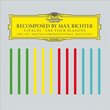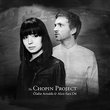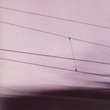| All Artists: Max Richter Title: Sleep [8 CD/Blu-ray Combo] Members Wishing: 1 Total Copies: 0 Label: Deutsche Grammophon Release Date: 1/8/2016 Album Type: Box set Genre: Classical Style: Number of Discs: 9 SwapaCD Credits: 9 UPC: 028947956822 |
Search - Max Richter :: Sleep [8 CD/Blu-ray Combo]
![Sleep [8 CD/Blu-ray Combo]](https://nationalbookswap.com/cd//l/34/6534/13336534.jpg) | Max Richter Sleep [8 CD/Blu-ray Combo] Genre: Classical
Acclaimed British composer Max Richter is about to make history, with a ground-breaking piece of work the longest single piece of music ever recorded! — His new album SLEEP is an eight-hour Lullaby. An exploration of music,... more » |
Larger Image |
CD Details
Synopsis
Product Description
Acclaimed British composer Max Richter is about to make history, with a ground-breaking piece of work the longest single piece of music ever recorded!
His new album SLEEP is an eight-hour Lullaby. An exploration of music, consciousness and human connectivity and is actually intended to send the listener to sleep.
The landmark work is played on piano, strings, with subtle electronic touches and vocals but no words. It s my personal lullaby for a frenetic world. A manifesto for a slower pace of existence. It would be great if people were to start playing it while they are getting ready for bed, so that they hear it in their sleep. Max Richter
Richter came up with the idea as he has always been fascinated by the process of sleep. As a child, it was my absolute favourite activity. I often think of composing as a daydreaming activity and, if I could, I would sleep for 23 hours a day! It s one of the most important things we all do and for me it s almost like a religion.
During his preparations, Richter consulted the eminent American neuroscientist David Eagleman, in order to understand the mechanisms of the sleeping mind, and the ways in which music can interact with them, which has directly influenced the composer s writing.
Richter describes it as an investigation into the process of sleep. It s really an experiment to try and understand how we experience music in different states of consciousness awake and asleep and ask whether different people hear it in different ways. For me, this piece of music is an attempt to see how that space where your conscious mind is on holiday can be a place for music to live.
The dream state is like you have switched the whole factory over, but there is still this window to the senses, so that the things you are hearing can get incorporated into your dream, and we have all had this experience when, for example your alarm clock goes off and it becomes part of your dream narrative. David Eagleman in conversation with Max Richter
In addition to the 8h landmark recording, there is also a 1h version from SLEEP.
You could say that the short one is meant to be listened to, and the long one is meant to be heard while sleeping, says Richter, who describes the one-hour version as a different trip through the same landscape.
Coinciding with the renewed interest in durational works within the fine art community, Richter says: this isn t something new in music, it goes back to Cage, Terry Riley, and LaMonte Young, and it s coming around again partly as a reaction to our speeded up lives we are all in need of a pause button.
His new album SLEEP is an eight-hour Lullaby. An exploration of music, consciousness and human connectivity and is actually intended to send the listener to sleep.
The landmark work is played on piano, strings, with subtle electronic touches and vocals but no words. It s my personal lullaby for a frenetic world. A manifesto for a slower pace of existence. It would be great if people were to start playing it while they are getting ready for bed, so that they hear it in their sleep. Max Richter
Richter came up with the idea as he has always been fascinated by the process of sleep. As a child, it was my absolute favourite activity. I often think of composing as a daydreaming activity and, if I could, I would sleep for 23 hours a day! It s one of the most important things we all do and for me it s almost like a religion.
During his preparations, Richter consulted the eminent American neuroscientist David Eagleman, in order to understand the mechanisms of the sleeping mind, and the ways in which music can interact with them, which has directly influenced the composer s writing.
Richter describes it as an investigation into the process of sleep. It s really an experiment to try and understand how we experience music in different states of consciousness awake and asleep and ask whether different people hear it in different ways. For me, this piece of music is an attempt to see how that space where your conscious mind is on holiday can be a place for music to live.
The dream state is like you have switched the whole factory over, but there is still this window to the senses, so that the things you are hearing can get incorporated into your dream, and we have all had this experience when, for example your alarm clock goes off and it becomes part of your dream narrative. David Eagleman in conversation with Max Richter
In addition to the 8h landmark recording, there is also a 1h version from SLEEP.
You could say that the short one is meant to be listened to, and the long one is meant to be heard while sleeping, says Richter, who describes the one-hour version as a different trip through the same landscape.
Coinciding with the renewed interest in durational works within the fine art community, Richter says: this isn t something new in music, it goes back to Cage, Terry Riley, and LaMonte Young, and it s coming around again partly as a reaction to our speeded up lives we are all in need of a pause button.

 Track Listings (31) - Disc #1
Track Listings (31) - Disc #1

